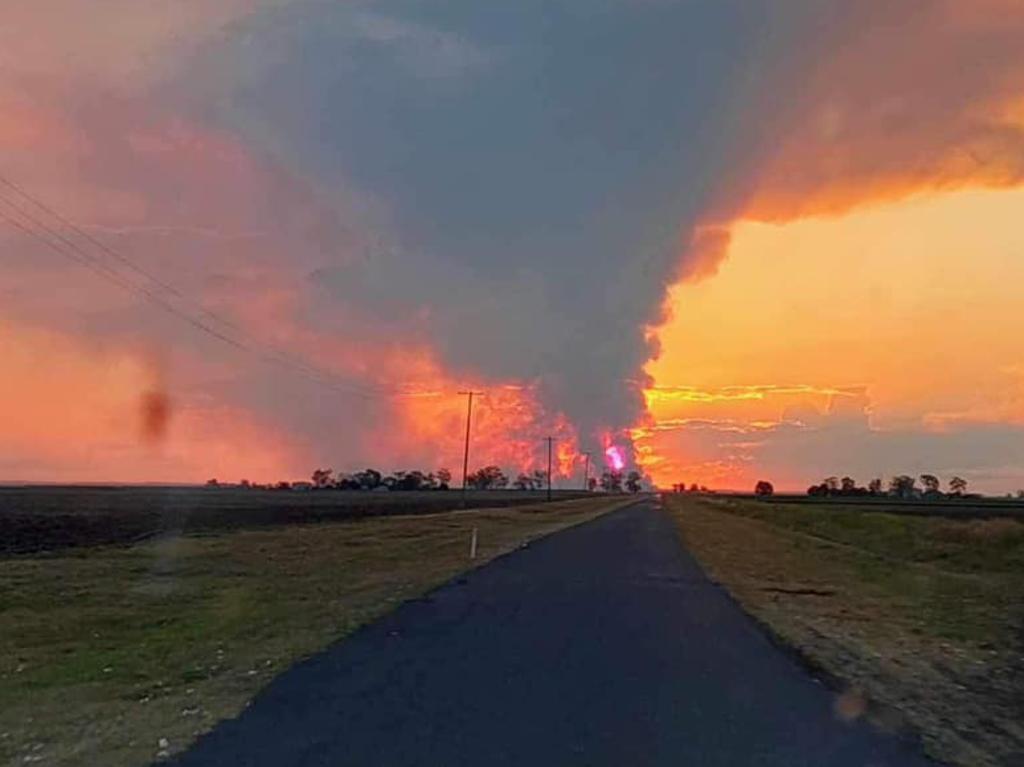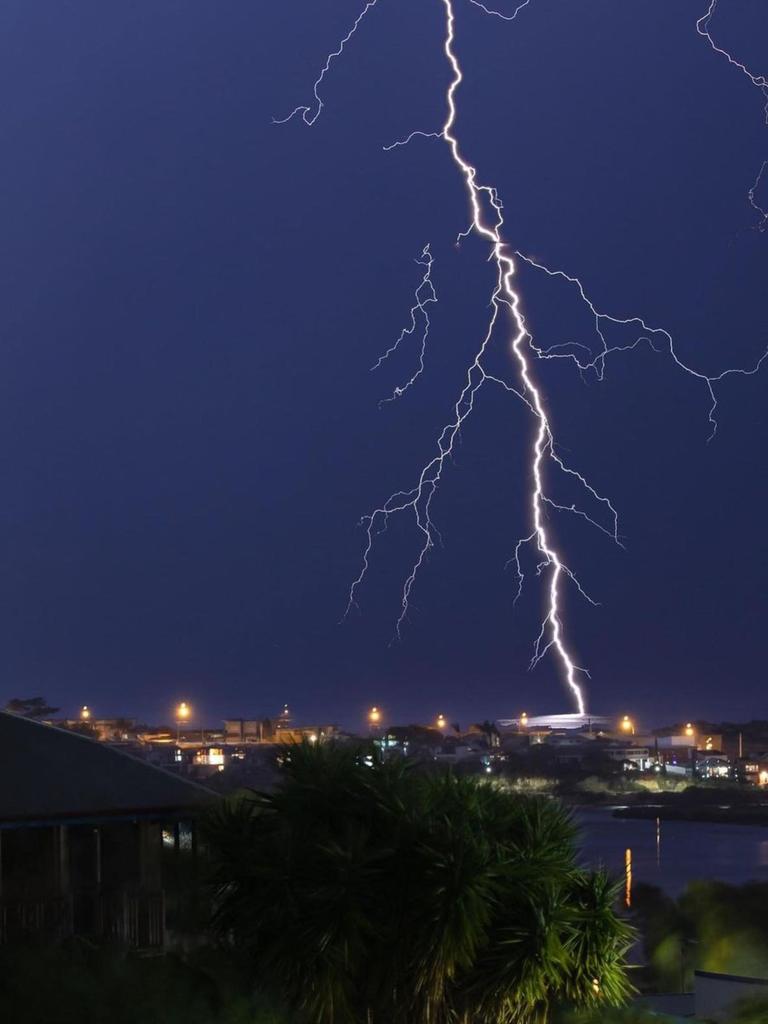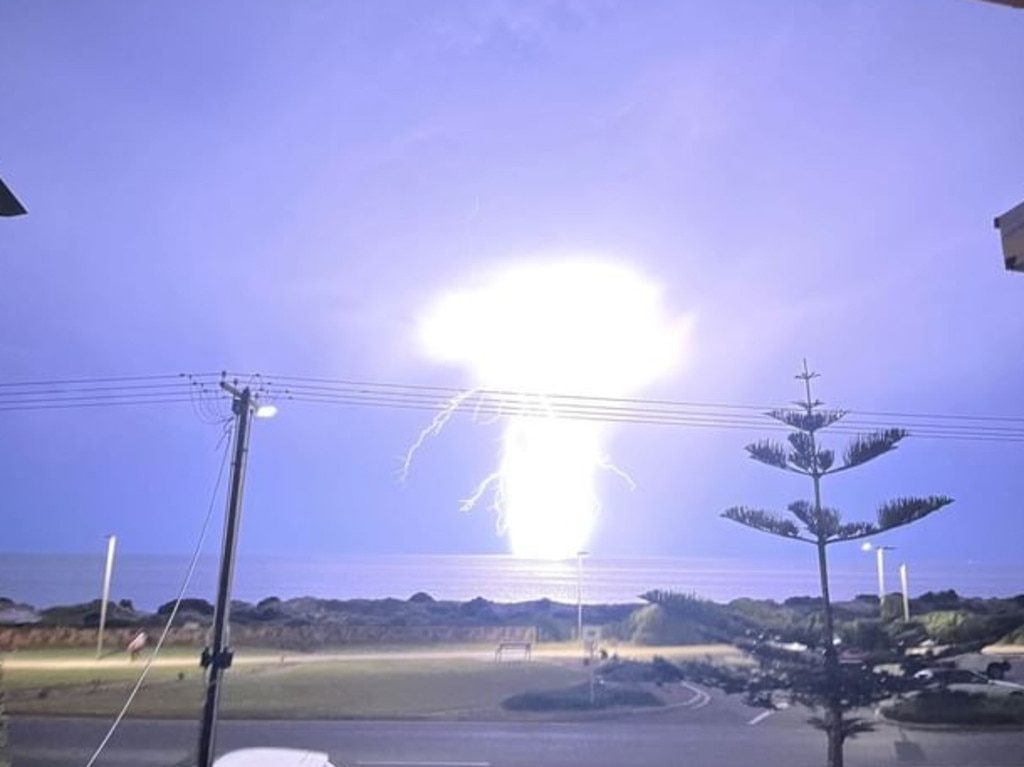Why ‘dry lightning’ forecast has firefighters worried for Australia’s bushfire season
Dry lightning is a wild weather phenomenon that has firefighters on edge after a huge electrical storm tore through southern Australia. See where lightning is striking much more than twice.

An intense thunderstorm system that lit up skies over southern Australia this week has prompted concern this bushfire season could see an increase in the phenomenon known as “dry lightning”.
“Dry lightning” refers to electrical activity from a thunderstorm which hits the ground, but with little or no accompanying rainfall, meaning there is no precipitation to stop a fire spreading if the lightning has ignited whatever it struck.
It poses a particular problem for firefighters because the blazes they start can be extremely remote, whereas fires caused by humans (through burning operations, or arson, or sparking power lines, etc) usually occur in places that are accessible to people, and often to vehicles.
Sky News Weather meteorologist Rob Sharpe said there was a concern dry lightning could be more prevalent this bushfire season, “In southern and central Australia we’re expecting fewer than usual thunderstorms, but with less moisture in the air we’re also expecting more outbreaks of dry lightning that causes new fires to develop,” he said.
“That’s something firefighters are concerned about; they’re worried about thunderstorm events through grassed or forested regions where there’s minimal rainfall. We think there’s likely to be more outbreaks of dry lightning over the coming season than in a typical season.”

South Australia and Victoria were rattled by a huge electrical storm system that swept through on Monday and Tuesday this week, formed by the collision of cold air from the Southern Ocean with a warm air mass from the north.
Data from MetraWeather.com, which tracks lightning activity for the Bureau of Meteorology, showed 41,000 lightning events were detected in SA and Victoria on those two days alone, with more than 17,000 lightning strikes hitting the ground.

Alex Zadnik from MetraWeather said many of those strikes would have been dry lightning, but the system picked up moisture as it moved eastwards, with many areas in Victoria reporting heavy rain.
Despite the intense electrical activity, not many fires were ignited. The Country Fire Service in SA responded to two grassfires believed to have been ignited by lightning strike – one in Sleaford on the tip of the Eyre Peninsula, and one in Wirraminna near Woomera. Neither threatened property.


There were no reports of dry lightning fires in Victoria, but the Country Fire Association revealed they had responded to nine such incidents since July 1 last year, although only one resulted in property damage.
Tina Sanderson from the Bureau of Meteorology said this week’s system was “typical of a dynamic springtime or summertime system,” but “not something South Australia would see every week”.
“(The system) was also quite gusty, and that can be another feature of these dry thunderstorms. The precipitation that’s trying to fall evaporates as it approaches the surface and it actually produces a big wind gust. That can be quite typical of dry lightning storms that fall in a very hot dry atmosphere,” Ms Sanderson said.

Hamish Clarke, a senior research fellow at FLARE Wildlife Research at the University of Melbourne, said recent Australian research had shown “there has been an increase in dry lightning over the last 50 years or so in southeastern Australia” but added “there’s a fair amount of complexity in the results, in terms of spatial variation, seasonality and magnitude”.
Associate Professor Marta Yerba, director of the Bushfire Research Centre at ANU, said ignition from dry lightning depended on several factors, including the strength of the charge, its duration, and the moisture content of the fuel it hits.


And while nothing can be done to prevent dry lightning, Australia’s monitoring of the phenomenon could be vastly improved, she said.
She is currently leading a team evaluating an American lightning detection system that promises to provide better accuracy, and more information about the strength of the lightning.
“Currently the network in Australia gives around two kilometres in the location accuracy of the strikes, but this network we are testing claims to have an accuracy of 40 metres,” she said.
“So you can imagine this improvement gives a lot of potential for faster response.”
Dry lightning strikes have played a role in some of the world’s worst fire events.
A recent California study showed 12,000 strikes started over 650 wildfires in that state in August 2020, while the final report of the NSW Bushfire Inquiry showed that of the 32 significant fires during the Black Summer of 2019/20, 24 were caused by lightning strikes.
More Coverage
Originally published as Why ‘dry lightning’ forecast has firefighters worried for Australia’s bushfire season




